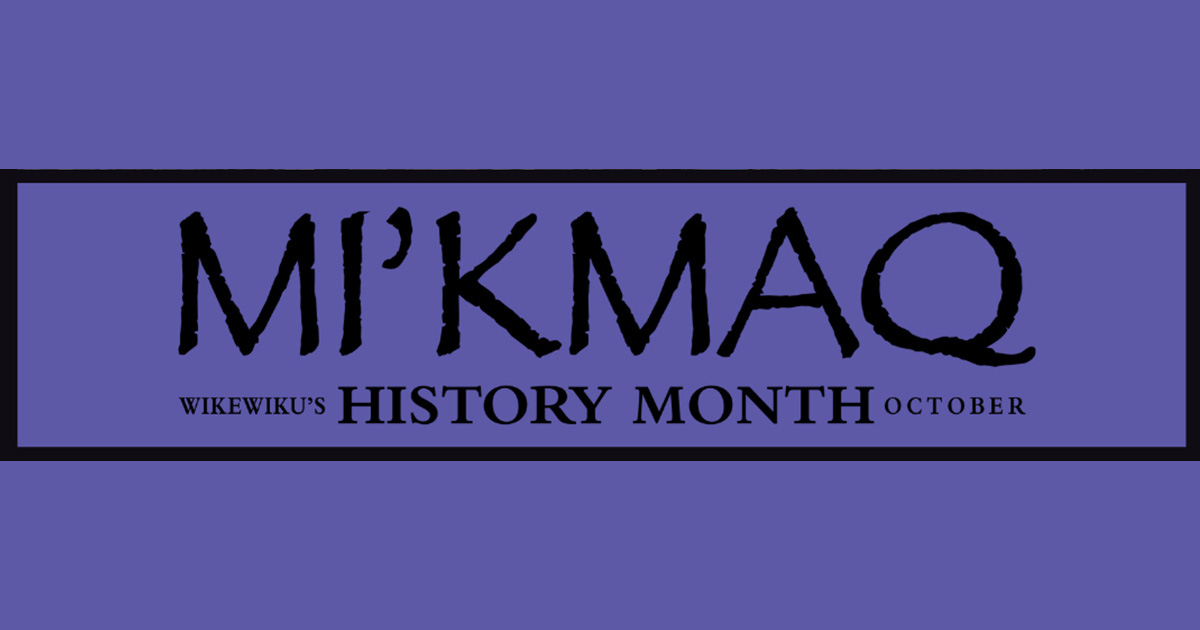October is Mi’kmaw History Month, I am pleased to feature an article by Jarvis Googoo, a resident of Kjipuktuk/Cole Harbour-Dartmouth. Wela’lin Jarvis!
Here is an example of some of the Mi’kmaw trivia that he will be sharing this month. If you’d like to see daily updates for October, please follow @JarvisGoogoo on Twitter for more.
Did you know the difference between Mi’kmaw and Mi’kmaq?
Mi’kmaw refers to a singular person or can be an adjective. For example, she is Mi’kmaw. He speaks the Mi’kmaw language. Mi’kmaq refers to the plural of Mi’kmaw people. For example, they are Mi’kmaq. This is the land of the Mi’kmaq.
Did you know that traditional Mi’kmaw territory, which is called Mi’kma’ki (“The Land of the Mi’kmaq”), was divided into seven districts?
Mi’kma’ki districts are within the Gaspé region of Quebec, eastern and northern New Brunswick, Nova Scotia, and Prince Edward Island. It’s theorized that the district boundaries likely followed natural drainage systems, which formed major rivers and subsequent streams. These waters provided valuable resources and were the main transportation routes for social and political interaction among the Mi’kmaq. It’s also believed that these boundaries were flexible to reflect changing needs and conditions, rather than strict geopolitical boundaries. An eighth district (Newfoundland) was added in 1860. The Mi’kmaw districts, Epekwitk aq Piktuk (Prince Edward Island and the lowland area of the Northumberland Strait) is recognized as one district (not two). It was believed that the land below this water was once above water. But after the ice age, enough water was left to create the island-land separation. Nevertheless, as it was recognized as one district, it is believed that the Mi’kmaq naming/recognition of this pre-dates the ice age. Geologists also learned that the rocks of northern Nova Scotia and Prince Edward Island formed at the same time over 280 million years ago in the same environment.
Did you know that colours are actually verbs in Mi’kmaw?
This is because colours can change over time (e.g., fading). The Mi’kmaq believed that everything was in flux and constant motion, so that is why Mi’kmaw is a verb-oriented language.
Did you know that Mi’kmaw education in Nova Scotia isn’t governed by the Indian Act nor by the Provincial Education Department?
It’s governed by the Mi’kmaq through Mi’kmaw Kina’matnewey (via the Mi’kmaq Education Act), which advocates/represents member communities’ educational interests and Mi’kmaw language rights. Two Mi’kmaq Education Acts were passed in 1998 (one federal and one provincial) to vacant the field for the Mi’kmaq. Sections 114 to 122 of the Indian Act gave power to the federal government in establishing Indian Residential Schools and removing children from homes/communities. With the Mi’kmaq Education Act (1998), sections 114 to 122 of the Indian Act became inapplicable in Nova Scotia. In 2014, as a gesture of Reconciliation, the federal government passed Bill C-428, which amended/repealed these sections altogether. Legally speaking, the Mi’kmaq of Nova Scotia was the first to officially outlaw Indian Residential Schools in Canada.
Did you know that over 400 Mi’kmaq signed up and enlisted in WWI, WWII, and the Korean War?
Yet First Nations people weren’t recognized as Canadians until 1956 and weren’t allowed to vote in provincial/federal elections until 1960. This means that we were allowed to fight and die for a country that didn’t recognize us as citizens.
Did you know about centralization in Nova Scotia of the 1940s?
This was an Indian Affairs policy to relocate all Nova Scotia Mi’kmaq onto two large communities; Eskasoni (for Cape Breton) and Sipekne’katik (for the mainland) in order to save the Department of Indian Affairs administrative costs. Those who didn’t move were told that their communities wouldn’t receive basic services. Those who moved were promised jobs and homes, but there were none. They were still in poverty, just in another community. There was strong Mi’kmaw resistance to Centralization and the policy didn’t work. The plan was abandoned by 1950. My grandmother’s family moved to Eskasoni for a year before returning to We’koqma’q a year later. Here’s a great APTN story re Centralization: https://www.aptnnews.ca/national-news/uprooted-the-little-known-story-about-mikmaw-history-of-forced-relocation/
Did you know that place names in Mi’kmaw can be verbs or nouns?
If the location had a particular activity (e.g., eel spearing), the name would be a verb. If the location were a specific landmark, (e.g., lake, certain resource), it may be a noun. The word “place” actually doesn’t exist in Mi’kmaw. Check out the Mi’kmaw Place Name Digital Atlas to see various locations (and their Mi’kmaw meanings and pronunciations) within Nova Scotia: https://placenames.mapdev.ca
Wela’lin/Thank you.
